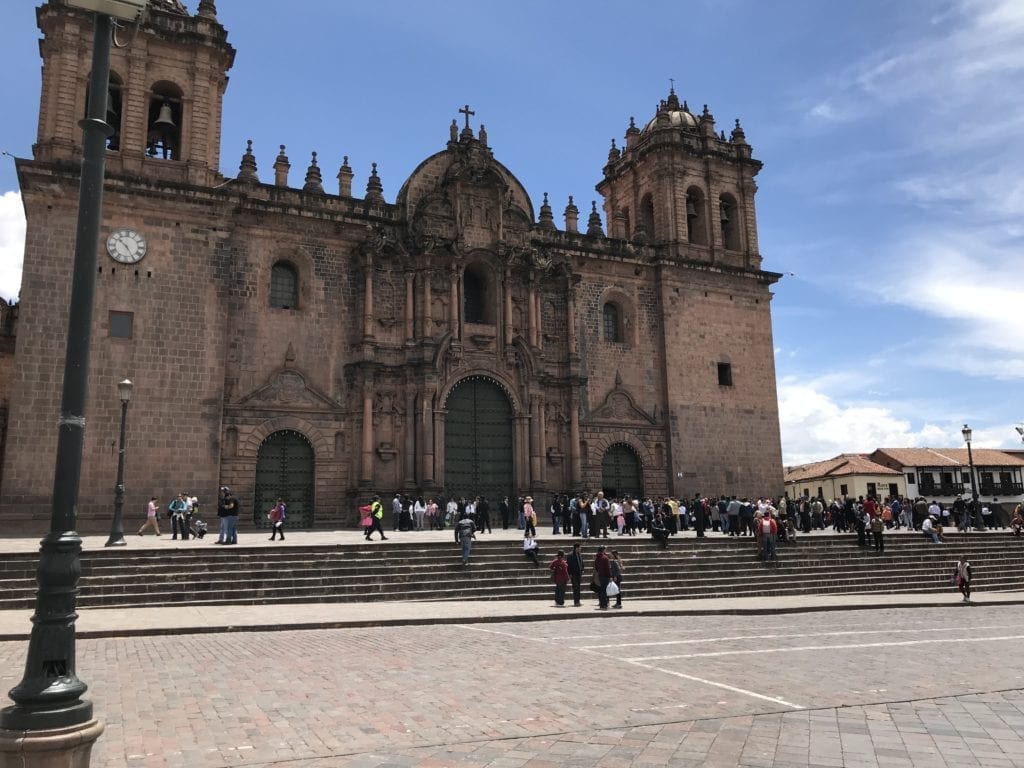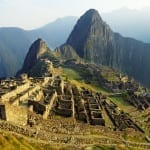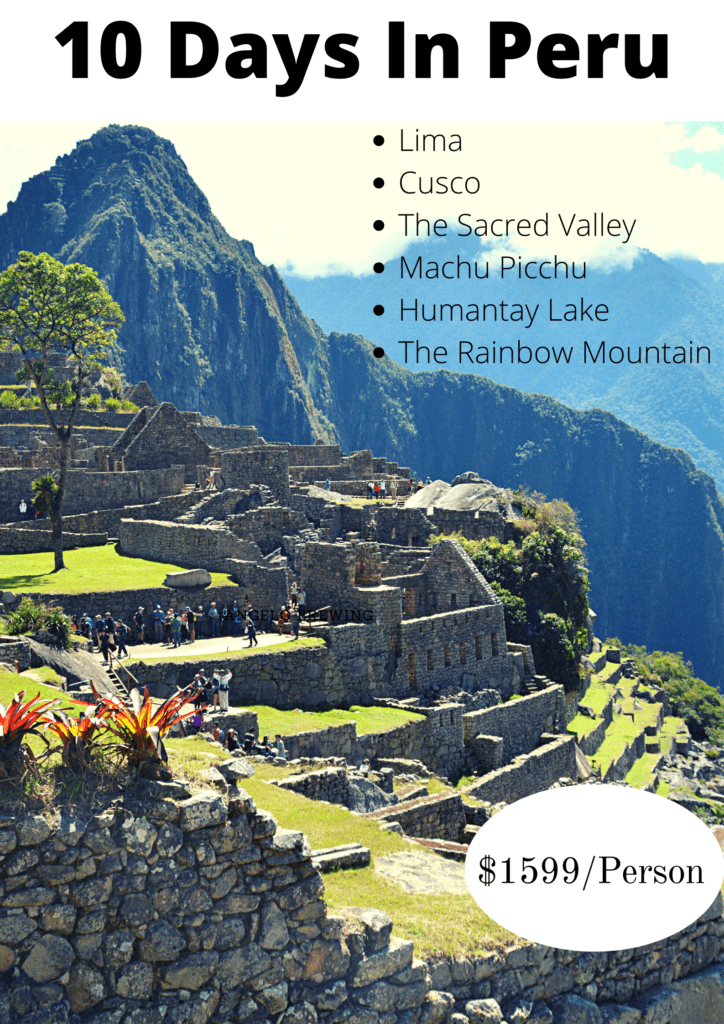What is The Elevation of Machu Picchu?
James Bustamante is Native to New York but born to Peruvian parents. He has been traveling throughout Latin America since early 2003 and finally made his home in Peru. James has made his way by eating and traveling through almost every country in Central and South America.
Last Updated on March 12, 2021 by James Bustamante
So we get this question plenty of times a day from our incoming travelers, what is the elevation of Machu Picchu? The elevation of Machu Picchu is 7,972 feet (2,430 meters) above sea level. That’s just the Basic Sanctuary though, the elevation in Machu Picchu mountain and The Huayna Picchu peak is higher.
The Elevation of Machu Picchu
The elevation of Machu Picchu is approximately 7,972 feet (2,430 meters) above sea level. This much elevation is usually not high enough to cause many adverse reactions like the dreaded elevation sickness. There are of course exceptions to every case and there have been a few cases in which people feel some discomfort at the Inca city.
Machu Picchu can be found high above the Urubamba valley in the cloud forest. We usually access the Machu Picchu hike by first arriving in the town of Aguas Calientes via train. Once we are in Machu Picchu you are probably more likely to be affected by the height when looking down at the valley than you will be from the elevation.
It is often thought that Machu Picchu is at a higher point than places like Cusco but this is not the case, if you were able to acclimate to Cusco then Machu Picchu will be fine.
Huayna Picchu Elevation
The elevation in Huayna Picchu is slightly higher than the main Machu Picchu structure, it is situated at 8,956 feet (2,730 meters) above sea level. This makes sit 984 feet (299 meters) higher than the Machu Picchu citadel.
If you decide to climb Huayna Picchu the elevation should not be a problem. You won’t be at the highest peak for long enough to really feel any difference in altitude. What gets most people with Huayna Picchu is the sheer vertical climb up the “stairs of death”. It is truly an experience and the view of Machu Picchu is amazing.
Machu Picchu Mountain Elevation
There is another hike within the complex of Machu Picchu that is called “Machu Picchu Montana” or the Machu Picchu mountain hike, its peak rests at 10,110 feet (3,082 meters) above sea level. This makes it higher than the elevation in the main Machu Picchu complex by about 2,138 feet (652 meters).
The peak for this hike is quite a bit higher than the others but similar to the Huayna Picchu hike, you won’t really be up there long enough to feel any differently. The view of Machu Picchu and the surrounding valleys is truly breathtaking once you are up there.
Effects of Machu Picchu Elevation
At An elevation of 7,972 feet (2,430 meters), you are not likely to feel any adverse effects. Some might develop a slight sense of pressure. The additional peaks of Huayna Picchu and Mount Machu Picchu are at a higher elevation than Machu Picchu but you should not feel any different since you will not spend much time there.
Remember to always have a water bottle with you because hiking indecently high elevation can dehydrate you quickly. If you came from Cusco then you will most likely feel quite relieved with the elevation and humidity level that Machu Picchu has to offer.
The Elevation of Cusco
Cusco is situated at 11,152 feet (3,400 meters) above sea level. The elevation of Cusco is higher than Machu Picchu by about 3,180 feet (969 meters) so that change is quite dramatic. Most travelers will have it backward and assume the easy part of acclimatization is done in Cusco and thus, most clients want to be in Cusco for the first couple of days of Peru.
We will usually recommend spending the first few days at the Sacred Valley and then come to Cusco during the final days of your trip. If you do happen to want to do the hardest part first and stay in Cusco for 48 hours while you get used to the altitude, the elevation of Machu Picchu will be a piece of cake.
Effects of Elevation
11,150 feet (3,400 meters) as soon as you walk out of the Cusco airport will be quite the difference. You might not feel the change in elevation at first but after a few hours that will most likely change. Most travelers will have some light reactions such as a bit of a headache, pressure in the forehead and generally feeling tired.
While others, a small percentage, will feel most of the previous symptoms added to a queasy stomach. If you don’t go through the acclimatization protocol and prefer to not take it easy for the first couple of days you will most likely have stronger symptoms. These may include, migraines, nausea, upset stomach, and just a general sense of discomfort.
Elevation of The Sacred Valley
The Sacred Valley in Peru is located at 9,514 feet (2,900 meters) above sea level, there are various points in the valley such as Ollantaytambo or Pisac that have higher and lower elevations by a few hundred feet. In general, though, the Sacred Valley is 1,542 feet (470 meters) higher in elevation than Machu Picchu.
We usually recommend coming to the Sacred Valley to do the initial acclimatization period since it is lower in elevation than Cusco. It is still high enough to feel the effects and possibly have elevation sickness symptoms but at a lower probability.
The open spaces and fresh air the circles through the valley will also be of help. There are several day hikes that leave from the valley so if you want to stay active by doing some light hiking to help acclimate, the Sacred Valley of the Inca is perfect.
Effects of Elevation at The Sacred Valley
At the elevation of 9,514 feet (2,900 meters), you will develop some discomfort but it is something quite manageable compared to Cusco. The Sacred Valley is also closer to the cloud forest where Machu Picchu is located so the additional humidity will also help alleviate the symptoms if any.
How to Treat Elevation Sickness

The best way to deal with elevation sickness is to not have it in the first place. We have a protocol for making sure you take precautions and have a comfortable trip through Cusco to the Sacred Valley and Machu Picchu. Here are a few tips:
Take It Easy The First 24 Hours
This is the biggest factor when trying elevation sickness. Travelers arrive in Cusco or The Sacred Valley and want to do too much too fast. Some activity is good but wanting to go out on a full-day hike on day one is a recipe for a bad case of elevation sickness. The best route is to get to your hotel to check-in and relax for an hour or two.
Have Plenty of Liquids
Make sure to be hydrated during the first couple of days. If your body is adjusting to the elevation and you have not been properly hydrating then you might feel some symptoms of the high altitude change. Make sure to always get plenty of water but don’t overdrink either, the point is to remain “light” for the first day or so.
Caffeine Helps
The caffeine in coffee helps get over the first few days of altitude change. Some coffee is good but drinks too much and you can have the opposite effect. Remember that Coca leaves and coca leaf tea works because it provides a sudden burst of energy, just like caffeine.
Eat Light Meals
The first few days should involve light meals, anything that is easy to digest, to be honest. This involves mostly bland food but it is better than having stomach issues.
Leave Out The Alcohol
You were expecting to have a complimentary Pisco sour at your hotel right? Well, that is definitely not the right choice at this time. Avoid alcohol for the first two days, it can dehydrate you quite easily in high elevation.
Stay Active
Don’t just stay inside your hotel. Make sure to have short walks throughout the day followed by rest periods.
Full Article: How to Get over Elevation Sickness
Frequently Asked Questions About The Elevation of Machu Picchu?
How high is Machu Picchu?
The elevation of Machu Picchu is 7,972 feet (2,430 meters) above sea level.
Is Machu Picchu higher in elevation than Cusco?
No, Cusco is higher than Machu Picchu by 3,180 feet (969 meters).
How high is the Sacred Valley?
The Sacred Valley in Peru is located at 9,514 feet (2,900 meters) above sea level on average, there are sections that are a bit over and some a bit under that elevation.
Is the Elevation of Machu Picchu higher than Huayna Picchu?
No, Huayna Picchu is higher by 984 feet (299 meters).
Can I get altitude sickness in Machu Picchu?
Most likely no. The elevation of Machu Picchu is not really high enough to present symptoms of elevation sickness. You will have already traveled from higher elevations before even getting to Machu Picchu.
















